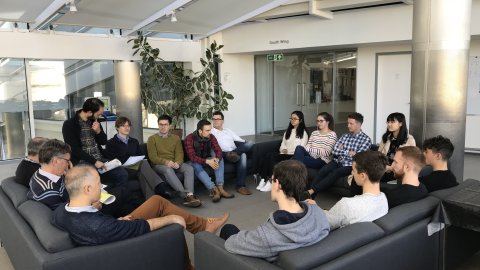16:00
Amenability, paradoxicality and uniform Roe algebras.
Abstract
There is a classical mathematical theorem (due to Banach and Tarski) that implies the following shocking statement: An orange can be divided into finitely many pieces, these pieces can be rotated and rearranged in such a way to yield two oranges of the same size as the original one. In 1929 J.~von Neumann recognizes that one of the reasons underlying the Banach-Tarski paradox is the fact that on the unit ball there is an action of a discrete subgroup of isometries that fails to have the property of amenability ("Mittelbarkeit" in German).
In this talk we will address more recent developments in relation to the dichotomy amenability vs. existence of paradoxical decompositions in different mathematical situations like, e.g., for metric spaces, for algebras and operator algebras. We will present a result unifying all these approaches in terms of a class of C*-algebras, the so-called uniform Roe algebras.
P. Ara, K. Li, F. Lledó and J. Wu, Amenability of coarse spaces and K-algebras , Bulletin of Mathematical Sciences 8 (2018) 257-306;
P. Ara, K. Li, F. Lledó and J. Wu, Amenability and uniform Roe algebras, Journal of Mathematical Analysis and Applications 459 (2018) 686-716;


